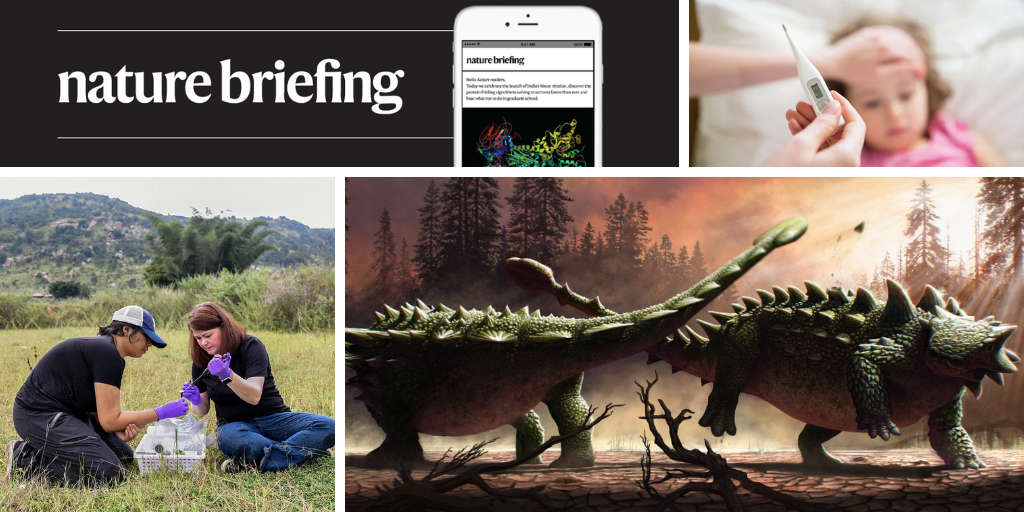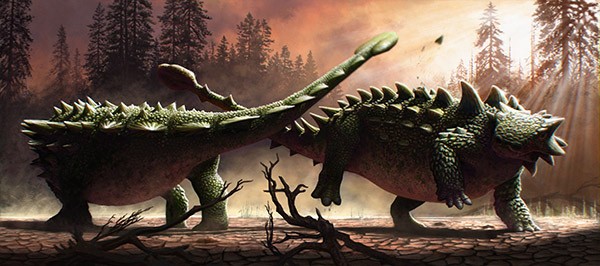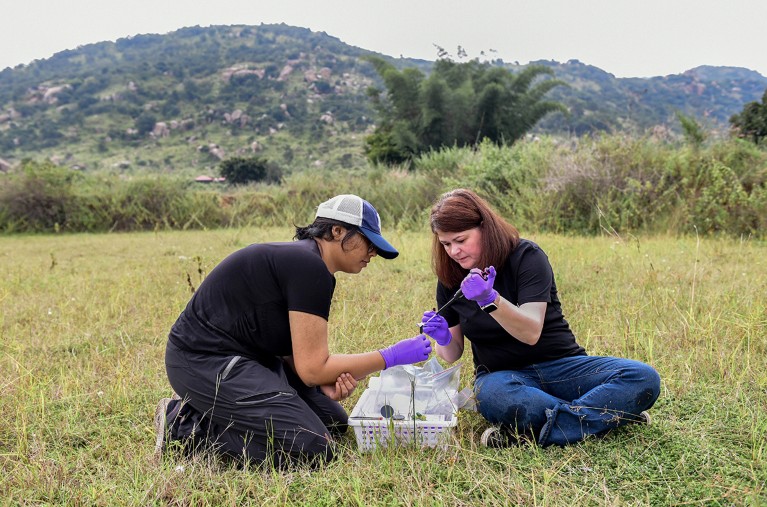Hello Nature readers, would you like to get this Briefing in your inbox free every day? Sign up here
Paediatric hospitalizations for influenza in Canada are currently much higher than usual.Credit: Aleksandra Suzi/Shutterstock
Clinicians and parents in Canada are watching with concern as paediatric hospitalizations for seasonal influenza have reached more than ten times the normal rate for this time of year. The vast majority of flu samples gathered have been A(H3N2) — a subtype that is more severe than other common strains and is less susceptible to vaccines. The good news is that deaths in children from flu are still at normal, very low levels. And Australia’s 2022 winter flu season — which provides an early sense of how the Northern Hemisphere’s season might play out — suggests that an early surge can peter out after a vaccination push.
Reference: Government of Canada FluWatch report
Source: Government of Canada FluWatch report
The United States remains the leading host destination for international students and has reversed a pandemic-fuelled decline in enrolment. Foreign graduate students were responsible for most of the rebound. Concerns about the United States that could influence future trends include the high cost of living, abortion bans, racism and the possible impact that the 2024 US election might have on immigration policy. Political tensions between the United States and China have already contributed to an ongoing decline: last year, 9% fewer students from China chose to study in the United States than in 2020–21.
Reference: The Open Doors Report from the Institute of International Education
Ankylosaurs might have used their enormous tail clubs to bash each other in battle over potential mates, rather than to ward off predators such as Tyrannosaurus rex. Researchers who analysed several Zuul crurivastator fossils (translation: ‘Zuul the shin-destroyer’) discovered that the spikes covering the animals’ bodies were often broken and half-healed around the hips. Since these scars were found only where another ankylosaurid club could have reached, the tail clubs were probably used for ritualistic combat, similar to how deer use their antlers.
The New York Times | 5 min read
Reference: Biology Letters paper
Illustrated by Henry Sharpe
Features & opinion
Throughout her whole career, obstetrician Kecia Gaither had seen what systemic racism looks like for Black mothers in the United States: they receive lower-quality health care and are more at risk of complications and death during and after pregnancy. She explains how cardiovascular screening programmes, longer-term postpartum care and enhanced anti-bias training for physicians could help to turn the tide on maternal death rates. “In general, we need more physicians and researchers who look like us,” says Gaither. “Data show that Black patients fare better when they have Black doctors taking care of them.”
Fifty years ago, the three-person crew of Apollo 17 became the last to visit the Moon. NASA’s Artemis I mission — which successfully returned to Earth on Sunday — aimed to rekindle the space-race spirit of lunar exploration. But as was the case during the cold war, US geopolitical prestige, rather than science, is the driving force, argues Alexandra Witze, Nature’s Earth and planetary sciences correspondent.
Nature+ gives you immediate online access to Nature and 54 other journals. Nature+ is a flexible monthly subscription and is currently available only to personal users in the United States and in the United Kingdom.Learn more about Nature+ in the US or in the UK
The cliff-clinging plants of Hawaii
Intrepid scientists are using drones to survey threatened cliff-dwelling plants in Hawaii. The technology can spare researchers from dangerous rappelling excursions and find samples that are unreachable, even to scientists on the end of a climbing rope. Admire some of the delightful discoveries made by high-flying botany-bots in this richly illustrated feature.
Where I work
Shannon Olsson is a chemical ecologist at the Tata Institute of Fundamental Research in Bengaluru, India.Credit: Sayan Hazra for Nature
Last week, I told you about the oldest cooked meal ever found: a tasty-sounding seed flatbread that might have been cooked by Neanderthals 70,000 years ago.Readers, you told me that you had to see that recipe, and palaeoecologist Chris Hunt did not let us down. Here are the edited details, which I’m sharing on the understanding that you will send me your photos and reviews of your own efforts:Neanderthal ‘flatbread’Based on an analysis by archaeobotanist Ceren Kabukcu, Hunt and their colleagues at Shanidar Cave in the north-west Zagros Mountains. “Following this recipe, you get something quite earthy tasting from the lentils and quite toasty, too, from the ‘grass’ seeds,” says Hunt.
Ingredients:
Two parts grass seeds — Hunt recommends wheat berries or pot barleyOne part lentils — try brown or Puy lentils
1. Soak everything overnight and then drain.
2. Grind in a pestle and mortar, or use a stick blender if you must.
3. Keep going until you have a mush with most components “in the 1-2 millimetre or smaller range” — add a little water as you go if needed.
4. Add more water until you have a thick paste.
5. Scoop some mixture onto a flat griddle or frying pan.
6. Cook gently, browning on each side. “Better for 15–20 minutes on a low heat rather than getting things really smoking!” advises Hunt, who sounds like he speaks from experience here.
Fast-forward 30,000 years and there is evidence from Shanidar that food was more diverse, including fruit from the terebinth (related to the pistachio), a wild precursor of the fava bean and mustard seeds, as well as wild grasses and wild lentils. And there is separate evidence that Neanderthals ate almonds. Add modern versions of these to your mix, and you’ll find the taste “significantly more interesting”, says Chris. Combining it with grilled goat or fish would also be “quite legitimate”, he adds. Sorry — strictly no salt.
Thanks for reading,
Flora Graham, senior editor, Nature Briefing
With contributions by Katrina Krämer and Smriti Mallapaty
Mark your calendars: next week the Briefing will start a short two-week break for the holidays. So don’t worry if you don’t see a daily Briefing during that period — although there will be two special editions packed with holiday treats.










More News
Computationally restoring the potency of a clinical antibody against Omicron – Nature
Reinvent oil refineries for a net-zero future
This Earth-like exoplanet is the first confirmed to have an atmosphere